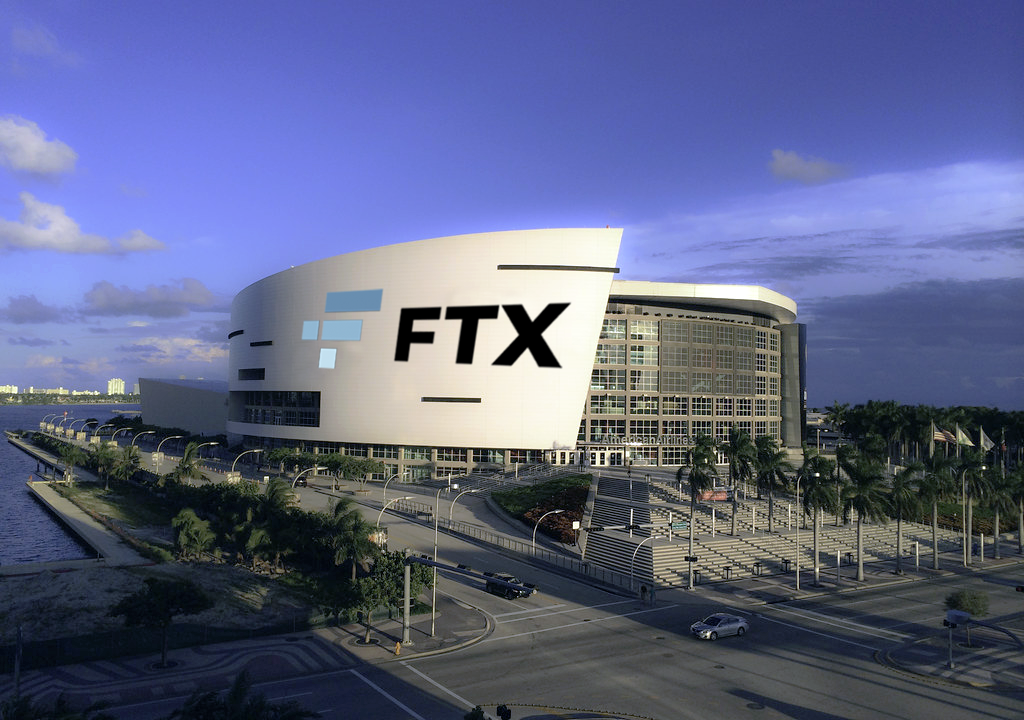Cryptocurrency app downloads in the United Arab Emirates (UAE) have seen a massive uptick in 2024, according to data from app analytics firm AppsFlyer.
The report revealed that downloads of the top 49 crypto apps soared from 6.2 million in 2023 to 15 million in 2024, marking a 41% increase. This surge was particularly prominent in the latter half of 2024, with over 1 million installs per month in the final quarter. December alone recorded a staggering 2.8 million downloads.
Key Drivers Behind the Growth
AppsFlyer attributed this rapid adoption to a combination of favorable market conditions and significant political developments.
On November 6, 2024, Donald Trump secured the U.S. presidential election, which was widely seen as a positive shift for the crypto industry. Trump had vowed to end regulatory crackdowns on digital assets and position the U.S. as the global hub for crypto innovation.
“There has been a strong correlation between these market factors and the UAE’s crypto market momentum,” said Shani Rosenfelder, director of market insights at AppsFlyer.
Trump’s Memecoin and Investor Surge
Adding to the excitement, Trump launched his own memecoin in January 2025, attracting a wave of new investors. According to a survey by NFT Evening, many first-time crypto users entered the market following the launch.
The U.S. crypto app market also experienced a boom, with platforms like Crypto.com, Moonshot, and Coinbase dominating the Apple App Store’s finance category.
However, while Trump’s memecoin drew in fresh investors, a Chainalysis report indicated that 813,000 wallets suffered losses of up to $2 billion after purchasing the token, highlighting the volatile nature of the crypto market.
Bitcoin (BTC) has remained locked in a tight trading range for over two months, oscillating between $92,400 and $106,500 since December 18, according to Cointelegraph Markets Pro. Despite billions in institutional inflows, the cryptocurrency has failed to break out significantly.
A brief exception occurred on January 20, coinciding with U.S. President Donald Trump’s inauguration, when Bitcoin surged to an all-time high of $109,000 before swiftly retreating into its established range.
Market Manipulation Suspicions
Some industry leaders believe Bitcoin’s price stagnation may not be entirely organic. Samson Mow, CEO of Jan3 and founder of Pixelmatic, suspects deliberate price suppression. Speaking at Consensus Hong Kong 2025, Mow noted:
“If you look at the price movement, we peak, and then we stay steady and chop sideways. It just looks very manufactured.”
Mow further emphasized the unnatural nature of Bitcoin’s restricted price fluctuations, raising concerns about external forces shaping the market.
ETF Inflows and Institutional Buying Fail to Move Price
Despite steady accumulation by institutions and retail investors, Bitcoin’s price remains stagnant. Companies like Michael Saylor’s MicroStrategy continue to buy Bitcoin in large quantities, yet the price refuses to budge. According to Mow, this suggests that substantial selling pressure is counteracting these inflows.
“If Bitcoin’s price isn’t moving despite accumulation, then someone must be selling,” he explained.
FTX Repayments and Potential Sell-Off Pressure
Adding to market dynamics, FTX has begun repaying creditors, distributing over $1.2 billion based on Bitcoin’s November 2022 price of around $20,000. This could lead to increased selling pressure as recipients cash in on their gains. Mow pointed out that Bitcoin sales at mid-$20K levels are likely impacting market movements, preventing upward momentum.
Despite these concerns, analysts remain optimistic, with 2025 price targets ranging between $160,000 and $180,000. However, for now, Bitcoin remains firmly within its controlled price range.
Coinbase has proposed a significant regulatory shift, advocating for the U.S. Commodity Futures Trading Commission (CFTC) to assume full authority over spot cryptocurrency markets. If implemented, this move would curtail the influence of the Securities and Exchange Commission (SEC) in the sector.
Coinbase’s Legislative Push
Faryar Shirzad, Coinbase’s chief policy officer, recently submitted a proposal to Congress urging swift action on regulatory clarity and consumer protections. His six-point legislative plan includes granting the CFTC full oversight of the crypto spot market.
“Digital assets like Bitcoin and Ethereum are commodities, not securities. Legislation must empower the CFTC to oversee the crypto spot market, ensuring transparency and protecting consumers from fraud and manipulation,” wrote Shirzad.
Balancing the SEC’s Role
While advocating for reduced SEC influence, Coinbase acknowledges the agency’s importance in certain areas. Shirzad suggested that Congress establish SEC rules for capital raising, ensuring blockchain projects have clear funding pathways without all tokens being classified as securities.
Industry Support for CFTC Oversight
Many within the crypto industry and Republican lawmakers support shifting oversight to the CFTC. Notably, Representatives Glen Thompson and Tom Emmer reintroduced the Digital Commodity Exchange Act in 2022 to give the CFTC regulatory authority over digital assets.
Former CFTC Chair Chris Giancarlo has also urged the Senate Agriculture Committee to endorse CFTC oversight. Meanwhile, reports suggest President Donald Trump is considering granting the agency jurisdiction over the sector.
Wresting Control from the SEC
Currently, the SEC regulates spot crypto markets, although it has acknowledged Bitcoin and Ethereum as non-securities. Former SEC Chair Gary Gensler previously argued that most cryptocurrencies fall under SEC jurisdiction due to their structure. However, the agency abandoned an investigation into Ethereum’s status in mid-2024, potentially to avoid further legal setbacks.
With growing political and industry support, the push for CFTC oversight could redefine cryptocurrency regulations in the U.S., providing long-sought clarity to investors and developers alike.
Bitcoin (BTC) could drop as low as $77,000 and still maintain its bullish trajectory in 2025, according to CryptoQuant CEO Ki Young Ju. In a series of posts on February 19, Ju emphasized that a 30% correction would align with historical trends while keeping the uptrend intact.
No Bear Market in Sight
Despite Bitcoin’s sideways price action and failure to reclaim $100,000, Ju remains confident in its long-term growth.
“I don’t think we’ll enter a bear market this year,” he stated, analyzing investor cost bases.
According to Ju, even a drop to $77,000 would not signal a bear market but rather a standard correction within a broader bull cycle.
Key Support Levels and Market Dynamics
Ju highlighted key price levels, including the cost basis of U.S. spot Bitcoin exchange-traded fund (ETF) investors at $89,000, which has served as strong support since November. Other crucial levels include:
- $59,000 – Aggregate breakeven for Binance traders.
- $57,000 – Bitcoin mining companies’ profitability threshold.
Historically, falling below these levels has indicated bear markets, such as in May 2022, March 2020, and November 2018.
Post-Halving Performance Signals More Upside
According to CryptoQuant, Bitcoin’s post-halving performance remains “unfinished.” Contributing analyst Timo Oinonen noted that since the last halving in April 2024, Bitcoin has only gained 60%.
Oinonen expects a potential sell-off in May, followed by a sideways summer and a strong Q4 rally, as seen in past cycles. He emphasized that major corrections could be months or even a year away.
With historical patterns supporting continued bullish momentum, Bitcoin’s long-term outlook remains promising, even in the face of short-term volatility.
Bitcoin’s price action is showing similarities to August 2023, with on-chain data indicating that extreme volatility may be imminent. CryptoQuant’s research suggests that BTC/USD is “ready” for a significant move after a prolonged period of stagnation.
Choppiness Index Signals Incoming Volatility
Bitcoin has been trading within a narrow range with declining volumes, a setup that often precedes a major price movement. CryptoQuant contributor Percival highlighted the Choppiness Index, which currently sits at 62 on the daily chart and 72 on the weekly chart, indicating the need for a directional breakout.
“In 2023, before the uptrend, price cleared all traders of ‘boring’ positions in the opposite direction due to low volatility,” Percival noted. This suggests that another liquidity grab could be on the horizon before a decisive move.
Key Price Levels and Support Zones
Should BTC’s price follow a similar trajectory as August 2023, investors should watch critical support levels. The short-term holder (STH) cost basis at $92,000 is one area of interest, while the 200-day exponential moving average (EMA) at $85,000 serves as a key fallback level.
“The possibility of false moves before the bull run is strong, many breakout traders are positioned in these zones, and the sovereign market tends to blow up these positions and return to the expected course,” Percival concluded.
With traders bracing for a major shakeout, Bitcoin’s next move could define the trajectory of the broader crypto market in the coming months.
FTX Digital Markets, the Bahamian division of the collapsed FTX exchange, is set to issue its first round of repayments to creditors on Feb. 18. This marks a major development in the crypto industry’s recovery following FTX’s near $9 billion collapse.
The exchange’s downfall led to a series of insolvencies and the longest crypto winter in history, with Bitcoin bottoming at $16,000. Now, creditors owed less than $50,000 in claims will receive repayments, marking a critical step toward financial resolution.
$1.2 Billion in Capital Reintroduced to Market
According to Sunil, a member of the FTX Customer Ad-Hoc Committee, the first batch of repayments will amount to an estimated $1.2 billion. This could positively impact market liquidity and investor sentiment.
Bitget Wallet’s COO Alvin Kan noted, “The $1.2 billion repayments may see a significant portion reinvested into cryptocurrencies, potentially impacting market liquidity and prices.”
Controversy Over Repayment Valuation
Despite the positive impact, some creditors have criticized the repayment model, which bases reimbursements on cryptocurrency values from November 2022—when Bitcoin was trading nearly 370% lower than current prices.
Limited Market Impact, But a Victory for Justice
While these repayments may not significantly move the market, they represent an important step toward restoring trust in the crypto industry. Magdalena Hristova, PR manager at Nexo, stated:
“The collapse impacted many investors and cast a shadow over crypto. For retail investors, especially those without diversified portfolios, these repayments offer not just the return of funds but a sense of stability and peace of mind.”
As of late 2024, twelve U.S. states have disclosed holdings in Strategy, formerly known as MicroStrategy, through their state pension funds or treasuries. Bitcoin analyst Julian Fahrer reported on February 17 that these holdings collectively amount to $330 million.
California Leads with Largest Holdings
Among the states, California has the highest exposure. The California State Teachers Retirement System holds 285,785 shares valued at $83 million, while the California Public Employees’ Retirement System owns 264,713 shares worth approximately $76 million.
California’s pension funds also have significant investments in Coinbase (COIN), holding over $155 million worth of stock.
Other Major State Investments
Florida’s retirement fund owns 160,470 shares of Strategy, valued at $46 million, while Wisconsin’s investment board holds 100,957 shares worth $29 million. Additionally, North Carolina, New Jersey, Arizona, Colorado, Illinois, Louisiana, Maryland, Texas, and Utah also have Strategy stock in their public investment portfolios.
Strategy’s Growth and Market Performance
Strategy, the largest corporate holder of Bitcoin with 478,740 BTC worth $46 billion, has seen its stock price surge by 16.5% in early 2025. Over the past year, its value has increased by an impressive 383%, significantly outperforming the broader crypto market’s 62% growth.
Following its rebranding to Strategy on February 5, the company has continued to position itself as a key player in Bitcoin-focused investments, attracting growing interest from institutional investors and pension funds.
The Securities and Exchange Commission (SEC) has temporarily suspended its fraud lawsuit against Geosyn Mining and its executives after federal prosecutors filed similar charges against the company’s leadership.
On February 14, the SEC submitted a request to a Texas federal court, agreeing to put the case on hold. This decision followed the voluntary surrender of Geosyn CEO Caleb Joseph Ward and former operating chief Jeremy George McNutt, who appeared in court the day before.
Allegations of Fraud and Misuse of Funds
An FBI affidavit, unsealed on February 10, alleged that Ward, McNutt, and former sales manager Jared McNutt orchestrated a scheme to defraud customers. While Jared McNutt was not named in the SEC’s suit, prosecutors claim the trio lured customers with promises of Bitcoin mining services.
Clients were led to believe Geosyn would purchase and operate Bitcoin mining rigs on their behalf in exchange for a monthly fee, with earnings from the mined BTC distributed to them. However, prosecutors allege that in many instances, the equipment was never purchased, and customer funds were instead used to finance personal luxuries.
According to court filings, the executives spent money on guns, luxury watches, a family vacation to Disney World, and an extravagant business trip to Miami, where they accumulated significant charges at restaurants and nightclubs using company credit cards.
Fake Reports and Ponzi-Like Practices
The affidavit also details how the trio misled customers by issuing fake reports showing earnings from non-existent mining operations. Additionally, funds from new investors were used to buy Bitcoin and distribute it to earlier clients, a move reminiscent of a Ponzi scheme.
Prosecutors further alleged that the executives manipulated mining rig prices, overcharging clients beyond the stated procurement fees. A spreadsheet allegedly maintained by the company revealed real versus inflated costs, highlighting the deception.
SEC’s Case and Future Developments
The SEC’s lawsuit claims Ward and McNutt defrauded 64 investors out of approximately $5.6 million between November 2021 and December 2022. The agency also alleges Geosyn failed to purchase 400 out of the 1,400 rigs it had promised and neglected to activate most of the rigs it did buy.
In response, Ward has refuted allegations that the company sold unregistered securities. Additionally, he previously reported McNutt for embezzlement but failed to disclose his own financial misdeeds.
Both Ward and McNutt have urged the court to delay the SEC’s proceedings, citing the criminal case and potential shifts in regulatory enforcement under the Trump administration. Trump has signaled plans to ease regulatory actions against the crypto industry, which could impact the SEC’s approach to enforcement.
Bitcoin (BTC) has broken out of a key technical pattern that has characterized its price movement over the past four years, and analysts predict this could set the stage for a significant price surge in the coming months.
The breakout came after Bitcoin surpassed the upper boundary of a “megaphone” or “broadening wedge” pattern, which typically signals a strong bullish move. This pattern is marked by a series of higher highs and lower lows, and when the price breaks through the upper trendline, it often leads to a parabolic rise. Bitcoin’s recent price action is seen by many as confirmation that the digital asset is poised for a significant upward trend.
Market analyst Gert van Lagen, who identified this pattern, now forecasts that Bitcoin could reach a price range between $270,000 and $300,000 by 2025. His analysis is supported by Elliott Wave Theory, which suggests that Bitcoin is currently in Wave (5), the final and typically most explosive phase of a bullish market. According to Lagen, this wave is likely to extend 1.618x to 2.0x the length of Wave (3), placing Bitcoin on track for substantial gains.
Moreover, comparisons to gold’s historical rise further bolster the bullish outlook for Bitcoin. Analyst apsk32 noted that Bitcoin has followed a trajectory similar to that of gold, a safe-haven asset, and could see its price soar as high as $400,000. Bitcoin’s growing adoption as a treasury asset by corporations, combined with institutional confidence in the cryptocurrency, further fuels this optimism.
Bitcoin’s role as a store of value is increasingly recognized, and many believe it could follow a similar path to gold, particularly as the U.S. government and other global institutions explore Bitcoin reserves. With influential investors and companies continuing to buy Bitcoin, its long-term value proposition looks stronger than ever, and the $270,000 to $300,000 target is seen as just the beginning.
Legislation around cryptocurrency in the United States is heating up, with several states introducing bills to regulate digital assets. The recent flurry of proposals aims to guide the incorporation of cryptocurrencies into state financial systems, with some even seeking to establish Bitcoin reserves.
North Carolina has taken the lead with a bill introduced in February that would allow the state treasurer to invest public funds in “qualified” digital assets, though the state would do so through exchange-traded products (ETPs) rather than directly purchasing crypto.
Speaker of the House Destin Hall, who championed the bill, emphasized that this move would position North Carolina as a leader in tech innovation. “This bill will position North Carolina as a leader in technological adoption & innovation,” Hall said. The bill has already passed its first reading and is being reviewed by the Committee on Commerce and Economic Development.
Michigan has also joined the movement, introducing a similar bill that would allow the creation of a state crypto reserve. The proposed legislation would permit the Michigan treasurer to allocate up to 10% of state investment funds to cryptocurrencies, either by purchasing crypto directly or through ETPs. It also includes provisions that would allow the treasurer to lend the crypto for further investment gains, provided it does not increase financial risk to the state.
Both of these bills reflect growing interest in cryptocurrency as an asset class within state governments, with proponents arguing that the inclusion of digital assets could make their states more competitive in the global economy. Some lawmakers are also taking inspiration from Texas, which has become a hub for crypto-friendly regulations.
This movement towards digital asset regulation is a direct response to the growing influence of the crypto industry in the U.S. As evidenced by the nearly $250 billion spent in 2024 to support pro-crypto candidates, cryptocurrencies are becoming a major political and financial topic in the country.











